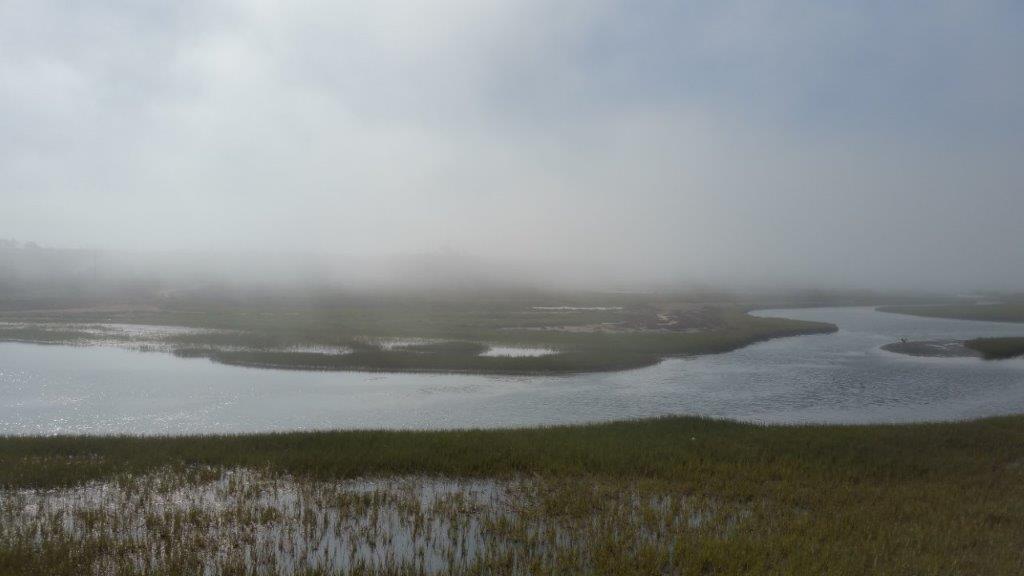3 crucial ways to protect California's coast

The wetlands at Banning Ranch, 400 acres of the last unprotected coastal open space
in Southern California. The land, which borders Newport Beach, Costa Mesa and Huntington
Beach, is slated for development. Credit: Everette Phillips/Banning Ranch Task Force
If you care about California's coast, then you know how important it is to work to protect it. How? Here are three ways to be an effective coastal activist -- and why it matters more than ever.
1. Be active in the Sierra Club, not just on your issue but as a member.
We in the Sierra Club are very lucky to have dedicated volunteers who have a great deal of experience. They can give you advice that will save you hours and make the difference between success and failure. You can meet these volunteers by being a more engaged volunteer yourself.
The Sierra Club is involved with many broad issues from hiking trail maintenance to climate change. This broad spectrum gives you many opportunities to help, to engage and to meet others. For example, the Angeles Chapter has an annual retreat in January where you can meet others and learn about conservation projects throughout L.A. and Orange counties.
Participation in outings or engaging with non-conservation groups is very important. Sierra Club members who engage in outings and social outdoor experiences make up most of the Sierra Club membership. They are sympathetic to the cause of a Coastal Activist, and you will gain some allies.
2. Coastal Issues usually involve the Coastal Act and connect to the California Coastal Commission. Sierra Club has expertise with both.
The most common mistake a coastal activist makes is not understanding the power of the California Coastal Act. The act is more than a law – it is a language for communicating a grievance to the Coastal Commission staff. There are many things that can drive a coastal activist to action, but only a few things that the Coastal Commission can address, so coastal activists must frame their issues in the context of the act. The Angeles Chapter has several regional task forces that are engaged in coastal issues. Each provides an opportunity to learn. The Banning Ranch Task Force, for example, has benefited greatly from the good works of the Ballona Wetlands Restoration Committee and the Save Hobo Aliso Task Force and the Santa Monica Mountains Task Force.
Banning Ranch activists have learned from the leaders of these other Angeles Chapter efforts and benefited from their experience. Before you call a more experienced Sierra Club member, read about their issue, read articles in the papers and read the Coastal Commission staff report (they are online – just Google the issue or applicant name) and the Sierra Club position paper (usually attached to the staff report). You will learn a great deal.
3. Most coastal Issues come down to Environmentally Sensitive Habitat Areas: The Coastal Act protects ESHA and does not allow mitigation for development. Mitigation is the practice of promising to recreate a habitat in a new location in exchange for destroying a habitat in a current location. ESHA can be related to protected species of animals or plants. The designation also has some buffer requirements. The ESHA and biodiversity found when a project is announced is very important, as it creates a baseline. At Banning Ranch, for example, the landowner was cited by the Coastal Commission for taking action that reduced the designated areas or degraded it. ESHA can stop roads and change the boundaries of a development.
For these reasons, Environmentally Sensitive Habitat Areas are the focus of attack by most developers. They either try to degrade it on purpose, hide it like in the movie, “Hoot,” or argue its very definition. A small change in definition expanded the potential viable development area at Banning Ranch from just under 20 acres to more than 50 acres. This is because buffers around ESHA disappeared when some areas were no longer considered ESHA. Defending the definition of ESHA is an important part of the Banning Ranch Task Force mission.
So if you know someone who has an interest in coastal issues, suggest they join the Sierra Club. Ask them to consider attending a Conservation Committee meeting to talk about their concern and their issue. They should also attend outings and share their concerns in our social settings. Why? Because they will most likely meet others with a similar passion and together they can make a difference in a coastal issue using the resources of the Sierra Club, the largest environmental organization on the planet.
Everette Phillips is a member of the Banning Ranch Task Force and Communications Chair for the Angeles Chapter. You may reach him at everette_phillips@yahoo.com



Add new comment